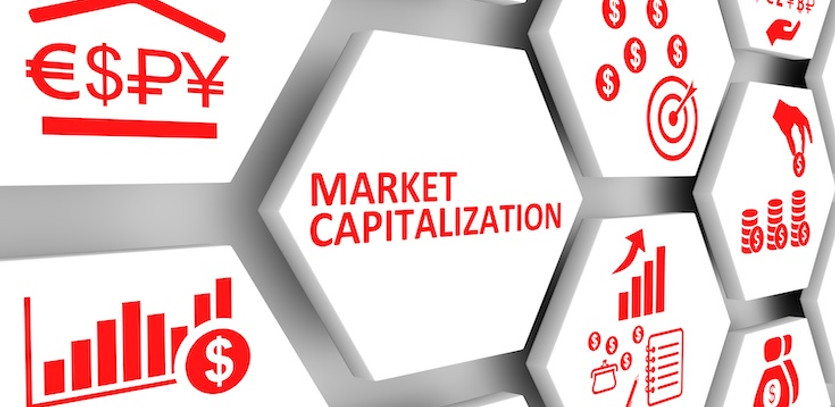Grasping the Concept of Market Capitalization
When considering buying stocks of a publicly listed company, simply looking at the price of a single share doesn't provide the full picture. It's vital to also consider its market capitalization (often referred to as 'market cap'). This figure provides a more accurate representation of the market's perception of the company's value.
Market capitalization represents the total value you'd have to shell out if you decided to buy all the company's shares. It doesn't necessarily reflect the actual value of the business. Whether a company falls under the small-cap, mid-cap, or large-cap category is determined by its market cap. Let's explore what this term means and how it can help us in evaluating a potential investment.
Defining Market Cap
The market cap of a company is computed by multiplying its current share price by the number of outstanding shares. This calculation provides a snapshot of a company's worth on the stock market. The computation can be based on the float method or the free-float method.
The float corresponds to the number of outstanding shares that are currently held by public investors, excluding any locked-in shares held by company executives, government entities, or any other private entity whose shares aren't traded in the market. The Dow Jones Industrial Average and the S&P 500 Index, among other stock market indices, utilize free-floating market caps.
The Significance of Market Cap
The market cap is a reflection of a company's total worth on the open market. It offers a glimpse into a company's size, operations, and resources. This understanding can aid investors in assessing the potential risk and returns associated with investing in a company.
The Relationship Between Market Cap and Stock Price
The market cap and stock price are intrinsically connected. They both communicate the same information about the company's value, and any fluctuation in one directly impacts the other. The market cap is effectively the product of the total outstanding shares and the share price, while the share price can be deduced by dividing the market cap by the total outstanding shares.
Take a look at two hypothetical companies with contrasting stock prices but relatively comparable market caps:
Company 1:
- Stock price: $60
- Outstanding shares: 60 million
- Market cap: $60 x 60,000,000 = $3.6 billion
Company 2:
- Stock price: $20
- Outstanding shares: 400 million
- Market cap: $20 x 400,000,000 = $8 billion
At face value, based on per-share prices alone, it's not evident that the second company is actually more highly valued. The higher number of shares issued by the second company indicates that investors, collectively, assign higher value to its shares compared to the first company.
Categorizing Market Caps
When comparing companies, the market cap acts as a useful benchmark. Classification criteria for small-cap, mid-cap, and large-cap companies vary and adjust with the shifting market conditions. For example:
- Small-Cap: Below $1 billion
- Mid-Cap: Between $1 billion and $10 billion
- Large-Cap: Above $10 billion
As of June 3, 2021, S&P has been using these market-cap boundaries for their indices:
- S&P 500: Minimum $13.1 billion
- S&P MidCap 400: Between $3.6 billion and $13.1 billion
- S&P SmallCap 600: Between $850 million and $3.6 billion
Additional categories, like micro-caps and mega-caps, may be included by some analysts and firms.
Generally, small-cap stocks possess higher growth potential as the companies still have ample room for expansion. Yet, they could also pose a greater risk, given that future performance is unpredictable. Large-cap stocks, with their established track records, are seen as safer but offer less growth potential. Mid-cap stocks usually provide a balance between growth potential and risk.
Market Cap versus Enterprise Value
The market cap, also known as the "equity value," only considers the value of a company's shares. The enterprise value provides a more comprehensive perspective on a company's worth.
To find a company's enterprise value, its market cap is added to the value of any outstanding preferred shares, any minority interest in the company, and the market value of its debt. This total is then adjusted by subtracting its cash and equivalents.
Analysts often use the enterprise value in place of the market cap for various metrics, such as the enterprise-value-to-EBITDA or the enterprise-value-to-revenue ratios. This approach can offer a more accurate valuation of companies that hold large cash reserves.
Conclusion
In sum, understanding market capitalization is crucial for anyone looking to make informed investment decisions. The market cap offers a more complete picture of a company's value compared to its stock price alone. It serves as an essential tool for investors, enabling comparisons across companies and providing insights into a company's size and operational scale. Thus, a company's market cap should never be overlooked when evaluating potential investments.





